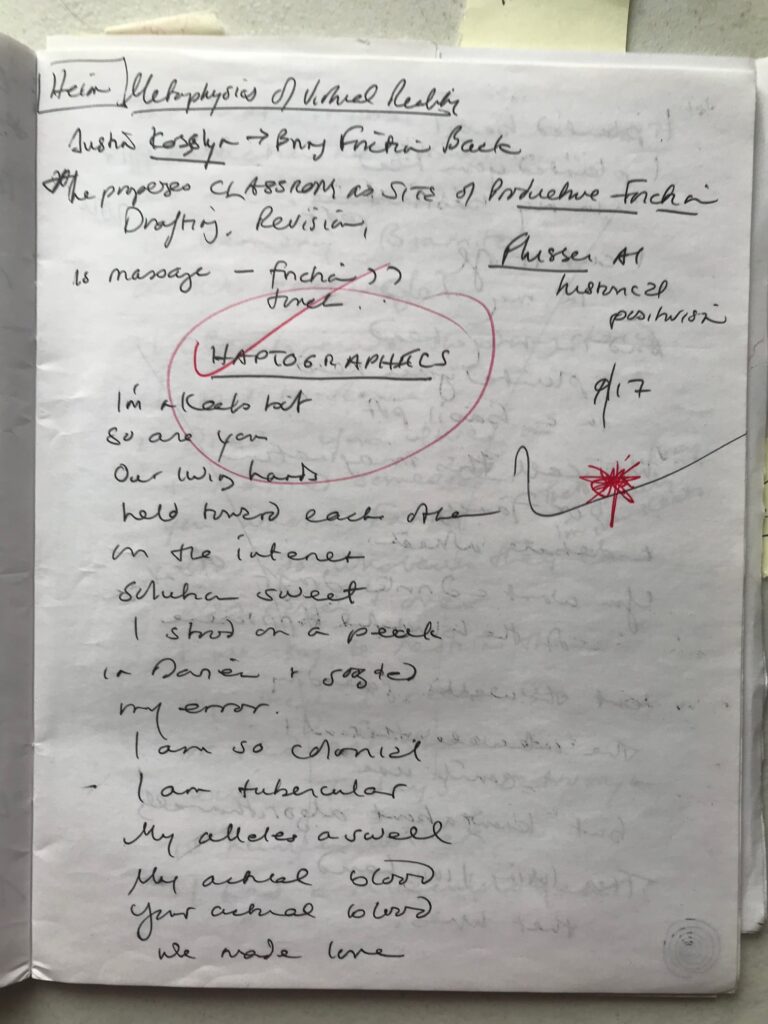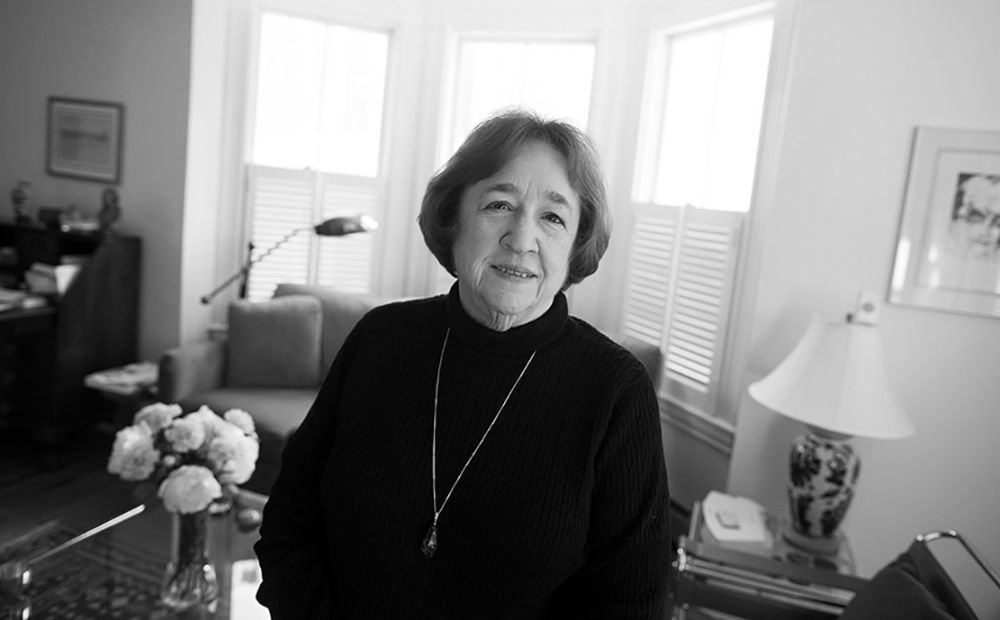Issue 188, Spring 2009
When I first arrived at his Dublin city-center apartment, John Banville was working at his writing desk. The apartment, with its neatly aligned furniture and its orderly piles of books, is not Banville’s home but his office, in which he works every day. Banville rarely gives interviews in his office, and after our first session he decided that meeting in local bars and cafés might be less “intense.” During the next three interview sessions he was more relaxed and more forthcoming. As he surveyed the surroundings, he gave vent to the dry wit that at all times underlies his dour bearing. This black humor threatened to overtake the conversation completely during a meeting held just before Christmas. Amid the bustle of shoppers, Banville’s brow stood acutely arched. He is a merciless observer and his narrators are the same way: cold-eyed, callous, caustic.
Banville is now sixty-three. He was born in Wexford, in southeast Ireland, to a father who worked as a garage clerk and a mother who worked in the home. He published his first book, the short-story collection Long Lankin, at the age of twenty-five and has since published a novel every three years or so: thirteen under his own name and, more recently, three under the pen name Benjamin Black. Following the early novels, he wrote two acclaimed trilogies: the first, consisting of Doctor Copernicus (1976), Kepler (1981), and The Newton Letter (1982), focused on men of science; the second, with The Book of Evidence (1989), Ghosts (1993), and Athena (1995), took the world of art as its touchstone. Doctor Copernicus won the James Tait Black Memorial Prize, Kepler the Guardian Fiction Prize, and The Book of Evidence the Guinness Peat Aviation Award. The Book of Evidence was also short-listed for the Booker Prize, an award that Banville won in 2005 for his novel of childhood and memory, The Sea. Banville has worked as a journalist since the late 1960s, when he became a sub-editor at the Irish Press. He later worked as a sub-
editor and then as literary editor at The Irish Times. He remains a prolific book reviewer for publications including the Guardian and The New York Review of Books.
As a novelist, he is famous for his difficulty. In their architecture and in their style, his books are like baroque cathedrals, filled with elaborate passages and sometimes overwhelming to the casual tourist. For this, Banville makes no apologies—he says he is committed to language and to rhythm above plot, characterization, or pacing. Being Benjamin Black, however, allows him to play more loosely with character and storytelling; in interviews and in correspondence, he refers to Black (“the rogue”) fondly and mischievously, delightedly playing this identity against his own. As Black he has written three novels in as many years: Christine Falls (2006), The Silver Swan (2007), and The Lemur (2008). Although the company of Black diverted him awhile from the agony of producing what he calls “a Banville book,” a new novel under his own name, The Infinities, is forthcoming.
INTERVIEWER
When did you first know that you wanted to write?
BANVILLE
It must have been in my early teens. My brother was living in Africa at the time, and although he has no memory of this he would occasionally send me books, one of which was James Joyce’s Dubliners. The book was a revelation to me—the idea that literature could be very elevated but still be about life as I knew it, about the rather grim, gray, mundane life I was living as a boy in Wexford in the fifties. When I finished Dubliners, I started writing terrible pastiches of Joyce on an enormous black Remington typewriter borrowed from my Aunt Sadie. I threw them all away many years later, of course, but I remember the opening of one of them: “The white May blossom swooned slowly into the open mouth of the grave.”
A boy in his teens! What did I know about death? This is a problem for Irish writers—our literary forebears are enormous. They stand behind us like Easter Island statues, and we keep trying to measure up to them, leaping towards heights we can’t possibly reach. I suppose that’s a good thing, but it makes for a painful early life for the writer. Anyway, hunched there over my Aunt Sadie’s Remington, I was starting to learn how to write. Now, fifty years later, I’m still learning.
INTERVIEWER
Was Wexford a good place for a writer to grow up?
BANVILLE
Auden said that children should be loaded with as much trauma as they can bear, because it’s good for them. I think that’s certainly true of children who are going to turn out to be artists. My traumas were Wexford, Ireland, the fifties, and especially the Catholic Church. The first thing the Catholic Church does to a child is instill guilt in his little soul, and guilt is a good thing for an artist. As for Wexford, I never even bothered to learn the street names, because I knew I was going to be out of there as soon as I possibly could. I hated it because it was boring and provincial. Of course now I feed on it—The Sea is a direct return to my childhood, to when I was ten or so. The book is set in a fictionalized Rosslare, the seaside village where we went every summer as children. Looking back now it seems idyllic, though I’m sure ninety-five percent of the experience was absolute, grinding boredom. I feel a kind of intellectual regret, not an emotional regret, at having left my parents and that world behind. But it’s not a great weight on my soul. In a way I wish it were. To leave one’s background without guilt is an indication of shallowness of character, I suspect.
INTERVIEWER
Did your parents read books?
BANVILLE
My parents were good, decent people, intelligent but not well educated. My father read cowboy books. My mother was afraid of the books I wrote, afraid of what she would discover if she read them. My father didn’t care what I wrote about. He read some of my early work and quite liked it, I think.
INTERVIEWER
You painted in your teens. What did you paint?
BANVILLE
Oh, hideous pictures, hideous pictures. I was in my mid-teens and I was really into Dylan Thomas, and therefore I painted scenes from Dylan Thomas. It makes the hair stand up on the back of my neck in embarrassment as I think about them. Dreadful pictures. But trying to be a painter did teach me to look at the world in a very particular way—looking very closely at things, at colors, at how things form themselves in space—and I’ve always been grateful for that. You have all this space, and you have a figure: what do you do with it? And in a way that’s what all art is. How do we find a place for our creatures, or inventions, in this incoherent space into which we’re thrown?
INTERVIEWER
What attracted you to novel writing?
BANVILLE
Language. Words. The world is not real for me until it has been pushed through the mesh of language, and this was as true then as it is now. I also had that wonderful conviction that writers have at the beginning that the possibilities are infinite. I didn’t realize just how difficult it was going to be. I thought that within five or six years I would be a fully fledged writer. Here I am now, at the age of sixty-two, still diligently practicing. But I loved, and still love, the craft. I am a graphomaniac. I cannot not write. If I find myself with a spare forty-five minutes at the end of my working day, I will turn to adding a few sentences to something. One of the reasons I love doing journalism—that is, reviews and literary articles—is that I can do it quickly. It gives me a craftsman’s pleasure. Fiction doesn’t do that. Fiction is just a constant torment, and an embarrassment. I loathe my fiction. I have a fantasy when I’m passing a bookstore that I could click my fingers and all my books would go blank, so that I could start again and get them right.
INTERVIEWER
Do you really hate your own novels?
BANVILLE
Yes! I hate them. I mean that. Nobody believes me, but it’s true. They’re an embarrassment and a deep source of shame. They’re better than everybody else’s, of course, but not good enough for me. There is a great deal more pain than pleasure in writing fiction. It’s only now and then, maybe once every three or four days, that I manage to write a sentence in which I hear that wonderful harmonic chime that you get when, say, you flick the edge of a wine glass with a fingernail. That’s what keeps me going. When I read the proofs of a new novel—which is the last time I will read or even glance at it—I approach it with one eye closed, so to speak, thinking, God, what am I going to find here? And I find horrors, horrors that can’t be fixed. Everything in the text now seems hopelessly flat and deadened. Where I imagined a dancing rhythm, I find clumping and stumbling.
INTERVIEWER
Your first book, Long Lankin, was a collection of stories and a novella. Why haven’t you returned to the short-story form?
BANVILLE
Nowadays everybody wants to have a rock band or write a film script, but back then our sole desire was to have a short story published in a little magazine. A beautifully produced journal, The Kilkenny Magazine, published my first short story. Following Joyce’s example with Dubliners—of course I was and still am fascinated by Dubliners—I put together a collection of connected short stories. Not that they had the same characters, but they were connected by theme and by chronology—one set was about childhood, another about adolescence, another about maturity. The novella was mortifyingly bad and I’ve since suppressed it. I knew nothing about life but I was writing it as if I were fifty years old—world-weary and cosmopolitan. But you know, I was learning to write. I was learning my capabilities and my limitations.




